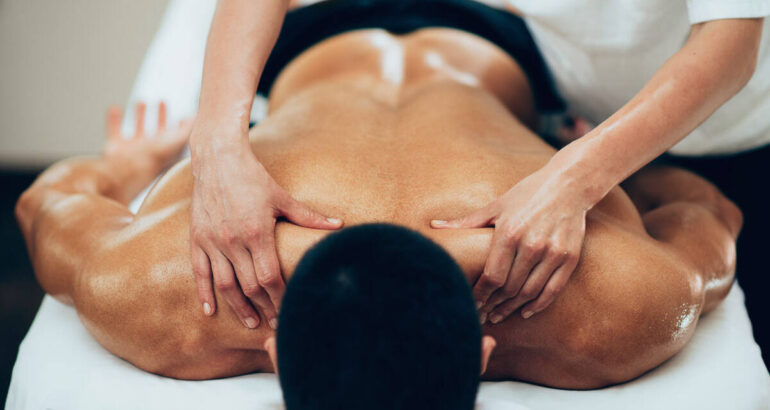
If you’ve booked your first physiotherapy massage in Waterloo, congratulations—you’ve taken a major step toward improving your health and well-being. Whether you’re dealing with a recent injury, chronic pain, muscle tension, or simply need to reset after months (or years) of physical stress, physiotherapy massage is a targeted treatment designed to help your body heal, move, and function better.
Still, walking into your first appointment can be a bit nerve-wracking if you don’t know what to expect. This blog will guide you through the entire experience—from preparing for the session to understanding what happens during and after the massage—so you feel confident and informed.
What Is a Physiotherapy Massage?
Physiotherapy massage, sometimes referred to as therapeutic or clinical massage, is a hands-on technique performed by a registered massage therapist (RMT) or physiotherapist. Unlike relaxation massages that are more general and soothing, physiotherapy massage is focused on treating specific areas of pain, injury, or dysfunction.
Goals of physiotherapy massage include:
- Reducing muscle tension and tightness
- Improving blood circulation and lymphatic drainage
- Relieving pain caused by postural issues, injuries, or overuse
- Supporting recovery after surgery or physical trauma
- Enhancing range of motion and flexibility
In Waterloo, many clinics offer physiotherapy and massage as part of a comprehensive treatment plan that may also include exercise therapy, manual therapy, and mobility training.
Step 1: Booking Your Appointment
You can book your appointment online, by phone, or in person at Restore Life Physiotherapy & Wellness. Waterloo has several reputable physiotherapy centers located near Uptown, University Avenue, and surrounding neighborhoods. When booking, you’ll typically be asked:
- If this is your first visit
- The nature of your injury or issue
- Your availability and preferred times
- If you have extended health insurance
Pro Tip: If your treatment is injury-related or medically necessary, bring a referral from your doctor. Many insurance providers require it for coverage.
Step 2: Before Your Appointment
To get the most out of your session, it helps to prepare in advance.
What to Wear:
Wear loose, comfortable clothing. Depending on the area being treated, you may be asked to remove certain items (e.g., shirt or pants), but proper draping with sheets and towels ensures your privacy at all times.
What to Bring:
- Photo ID and health card (if applicable)
- Insurance details or benefits card
- Any referral notes, test results, or X-rays
- A list of current medications or relevant health history
Don’t:
- Eat a heavy meal just before your appointment
- Apply lotion or oil to your skin the same day
Step 3: The Initial Assessment
Your first session will begin with a short consultation and assessment. This is a key part of physiotherapy massage because it helps your therapist tailor the treatment to your specific condition and goals.
Your therapist will ask:
- What brought you in (pain, injury, stiffness, etc.)
- The nature, location, and intensity of your symptoms
- Your medical history and any recent surgeries or injuries
- Your daily activities, posture habits, or exercise routine
They may also do a physical assessment, checking your range of motion, posture, and muscle tone. Don’t worry—this is non-invasive and meant to gather information to guide the treatment.
Step 4: The Massage Treatment
After the assessment, the hands-on massage portion begins. A physiotherapy massage is typically focused on specific problem areas rather than full-body relaxation. However, it can still be very soothing.
What to Expect:
Targeted Techniques: Your therapist may use a combination of deep tissue massage, trigger point therapy, myofascial release, or joint mobilizations, depending on your condition.
Communication: You’ll be encouraged to speak up about pressure, pain, or discomfort. It’s important that you feel safe and in control throughout the session.
Muscle Soreness: Some areas may feel tender or tight, especially if you’ve had chronic tension or inflammation. Mild discomfort is normal, but sharp pain is not—let your therapist know if something doesn’t feel right.
Breathing and Relaxation: Your therapist may guide you to take deep breaths during the session to help your muscles release tension. Staying relaxed helps the massage be more effective.
Treatment Length: Your first session may last between 45 to 60 minutes, depending on the clinic and your specific treatment plan.
Step 5: Aftercare and Recovery
After your massage, your therapist may review their findings with you and offer suggestions for at-home care, stretches, or follow-up appointments. Here’s what to expect post-treatment:
You Might Feel:
Relaxed or sleepy
- Slightly sore in the treated areas (like post-exercise soreness)
- A sense of improved mobility or reduced tension
What to Do:
- Drink plenty of water to flush out toxins
- Avoid strenuous activity for the rest of the day
- Apply a warm compress if you feel soreness the next day
Watch Out For:
Intense pain, swelling, or bruising (these are uncommon and should be reported to your therapist or doctor)
Your first physiotherapy massage in Waterloo is an important step toward healing, recovery, and long-term physical health. While the idea of a clinical massage might seem intimidating at first, knowing what to expect can ease your nerves and allow you to fully benefit from the session.
You’ll walk away not only feeling better but also with a deeper understanding of how your body moves, where your tension lies, and what you can do to support your recovery. Whether you’re a student, athlete, office worker, or simply someone looking to reduce pain and tension, physiotherapy massage is a smart, science-backed way to care for your body.
